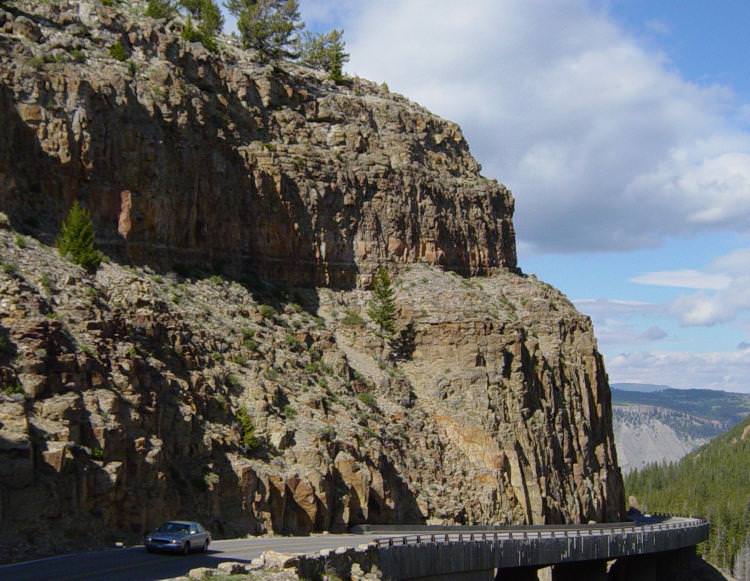[/caption]
When volcanoes erupt, they can blast out lava, hot gasses, rocks and clouds of ash. Some of this ash rises up into the air and can travel for hundreds of kilometers in the air. Other ash pours down the sides of the volcano in great pyroclastic flows. When this ash cools, hardens and forms rocks, this material is called volcano tuff.
Geologists have a catch all name for rock ejected out of a volcano during an eruption: tephra. That can include tiny ash particles or large rocks. Particles smaller than 2 mm in diameter are considered ash. And when this ash is compacted down into rock, then you get volcanic tuff.
Tuff can range in texture, chemistry and mineral properties. Some tuff is very soft and can be easily dug with hand tools. Other tuff has been keep under pressure and cemented together to the point that it’s as hard as obsidian. Since there’s always been volcanism on Earth, volcanic tuff can be found around the Earth, in many different places and rock layers. Some is exposed on the surface, while others are buried by other eruptions or eroded material.
One of the most dramatic events is a “nuee ardente”. This is a glowing avalanche of hot ash cascading down the side of a volcano at speeds greater than 100 km/hour. When the ash avalanche comes to a stop, all this ejecta will compact together to form welded tuffs. There are large regions like this in Yellowstone National Park.
Ancient people used the soft nature of volcanic tuff to make buildings. They could carve out bricks from the soft rock to make walls.
We have written many articles about volcanoes for Universe Today. Here’s an article about volcanic ash, and here’s an article about volcanic rock.
Want more resources on the Earth? Here’s a link to NASA’s Human Spaceflight page, and here’s NASA’s Visible Earth.
We have also recorded an episode of Astronomy Cast about Earth, as part of our tour through the Solar System – Episode 51: Earth.

